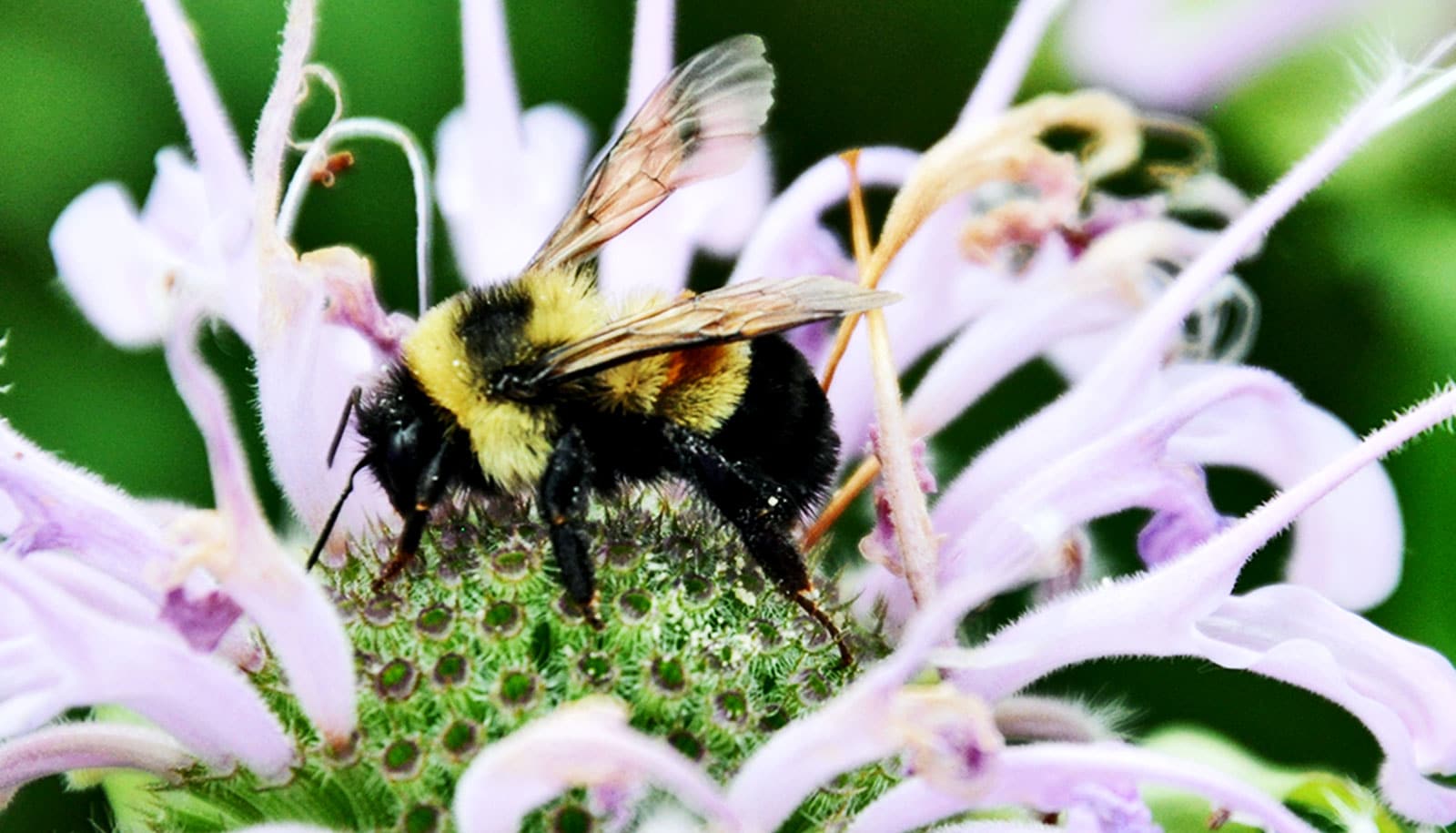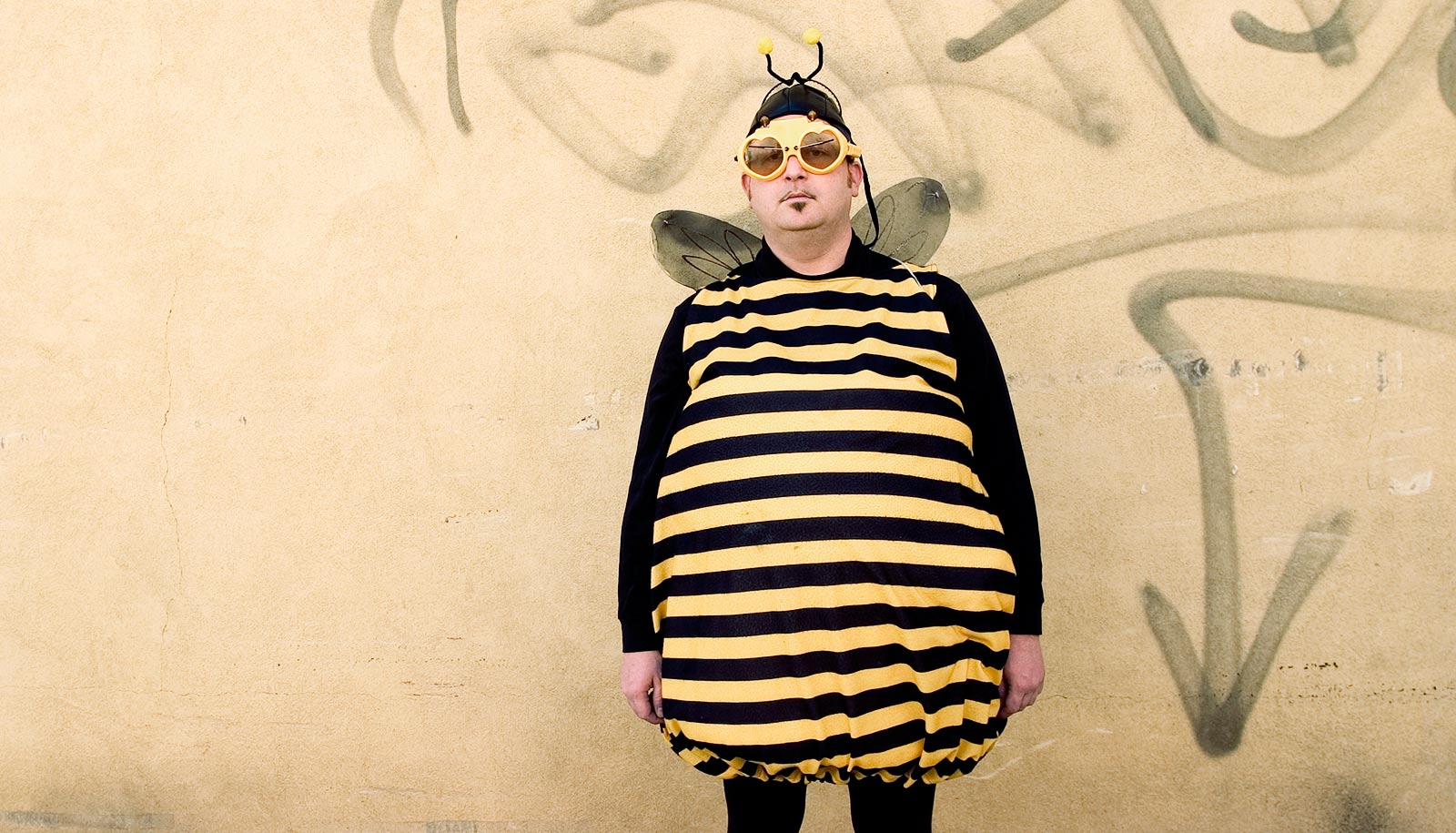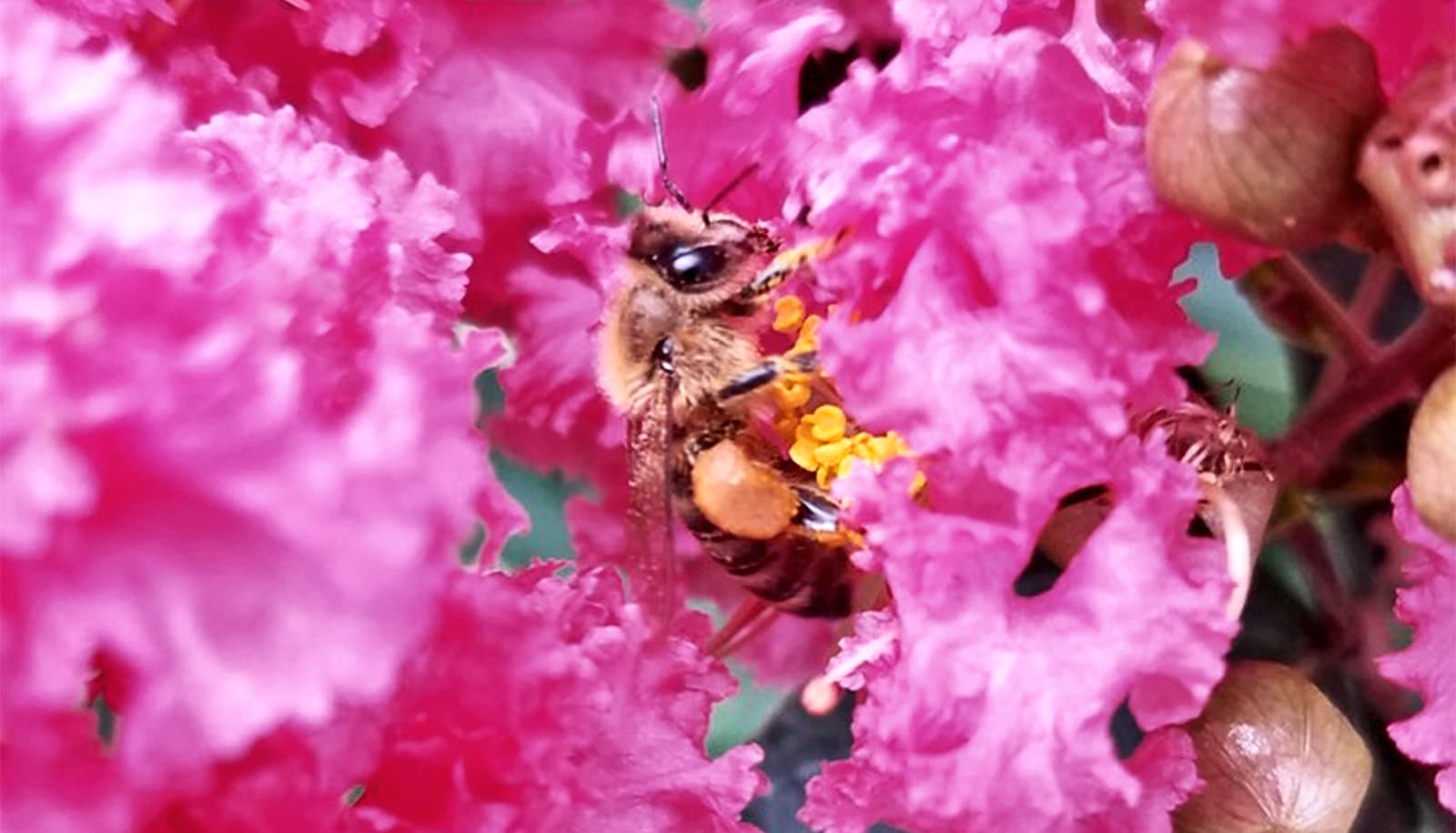Roads pose a significant threat to bee movement and how they pollinate flowers, a new study shows.
Road networks extend some 20 million miles across the globe, and that number is projected to increase by an additional 15 million miles or so by 2050.
Roads can be barriers to wildlife of all sorts, and scientists have studied road impacts on animals including Florida panthers, grizzly bears, box turtles, mice, rattlesnakes, and salamanders.
But much less is known about the impact of roads on pollinating insects such as bees and to what extent they disrupt insect pollination, which is essential to reproduction in many plant species.
To find out, researchers used fluorescent pigment as an analog for pollen. They applied the luminous pigment to the flowers of roadside plants to study how roads affected the movement of pollen between plants at 47 sites in Ann Arbor, Michigan.

The findings, published in the Journal of Applied Ecology, show that plants across a road from pigment-added plants received significantly less pigment than plants on the same side of the road.
The study offers relatively simple ways to reduce this road-barrier effect.
“Our study shows that roads and paths pose a significant barrier to bee movement and therefore substantially reduce pollen transfer,” says study author Gordon Fitch, a doctoral candidate in the University of Michigan ecology and evolutionary biology (EEB) department. Chatura Vaidya, also an EEB doctoral candidate, is a coauthor of the study.
The study focused on two species of insect-pollinated flowering plants native to the region, wild bergamot (Monarda fistulosa) and threadleaf coreopsis (Coreopsis verticillata).
At each site, researchers placed three potted plants along the roadside on a warm, sunny morning. They applied luminous pigment to the reproductive structures in the flowers of one plant (the “pigment-added” plant).

Then they placed a second plant (the “across” plant) across the road from the pigment-added plant, and measured the distance between the two plants. Finally, they placed a third plant (the “along” plant) on the same side of the road as the pigment-added plant, at the same distance from the pigment-added plant as the “across” plants.
At most sites, they deployed both species of flowering plants in this fashion.
The researchers left the plants outside for the day, collected them in the evening, and brought them to a dark location. They used an ultraviolet flashlight to determine how patterns of pigment transfer varied, depending on whether the plants were located on the same side of the road or on opposite sides of the road.
To do this, the researchers counted the number of flowers on each plant that held pigment. Because wind and nonpollinating insects can sometimes transfer pigment, they only counted flowers with pigment on their reproductive parts, not the petals.
The researchers found that being across the road reduced pigment transfer by 50% for the threadleaf coreopsis plants and by 34% for wild bergamot plants, compared to plants on the same side of the road. “Ours is the first well-replicated study to examine how roads impact bee movement,” Fitch says.
“Moreover, we used an innovative technique relying on pigment as a pollen analog—rather than direct observation of insect behavior—which allowed us to collect data efficiently. As such, we are also the first to show that roads disrupt the movement of pollen between plants.”
During the study, Fitch and Vaidya observed 65 insect visits to threadleaf coreopsis plants and 356 to wild bergamot plants. Bees accounted for 97% of the visits.
Bees are indispensable pollinators, supporting both agricultural productivity and the diversity of flowering plants worldwide. In recent decades, both native bees and managed honeybee colonies have seen population declines blamed on multiple interacting factors including habitat loss, parasites and disease, and pesticide use.
Fitch and Vaidya found that both the size of the road, as well as the size of the bees reduced pigment transfer: As the number of road lanes increased, or as the size of the bee decreased, the effect was greater.
Pigment transfer across roads with three or more lanes of traffic was rare for either plant species, they found, suggesting that medium-sized and large roads may impede the movement of bees sufficiently to affect foraging and pollination.
The researchers recommend the evaluation and implementation of strategies to make roads less of a barrier to pollinators—without spending huge sums of money to do so.
Wildlife crossing structures that have been used in North America and Europe to facilitate movement of animals through landscapes fragmented by roads include wildlife overpasses, bridges, culverts, and pipes.
In a similar fashion, existing pedestrian overpasses could potentially be modified to help bees and other flying pollinators, simply by adding flower-containing planter boxes to the landscaping, Fitch says. He cautions such an approach is largely hypothetical and is untested.
Such measures could potentially dovetail with efforts in some cities to promote alternative modes of transportation and to reduce traffic accidents by using so-called road diets. This increasingly popular design strategy reduces the amount of a roadway dedicated to vehicular traffic through, for example, the addition of bicycle lanes or wider sidewalks.
“Since road width and traffic volume were major predictors of pigment transfer in our study, this suggests that road diets could also help reduce the effects of roads on flying insects, particularly if they included pollinator-friendly plantings,” Fitch says.
Source: University of Michigan


